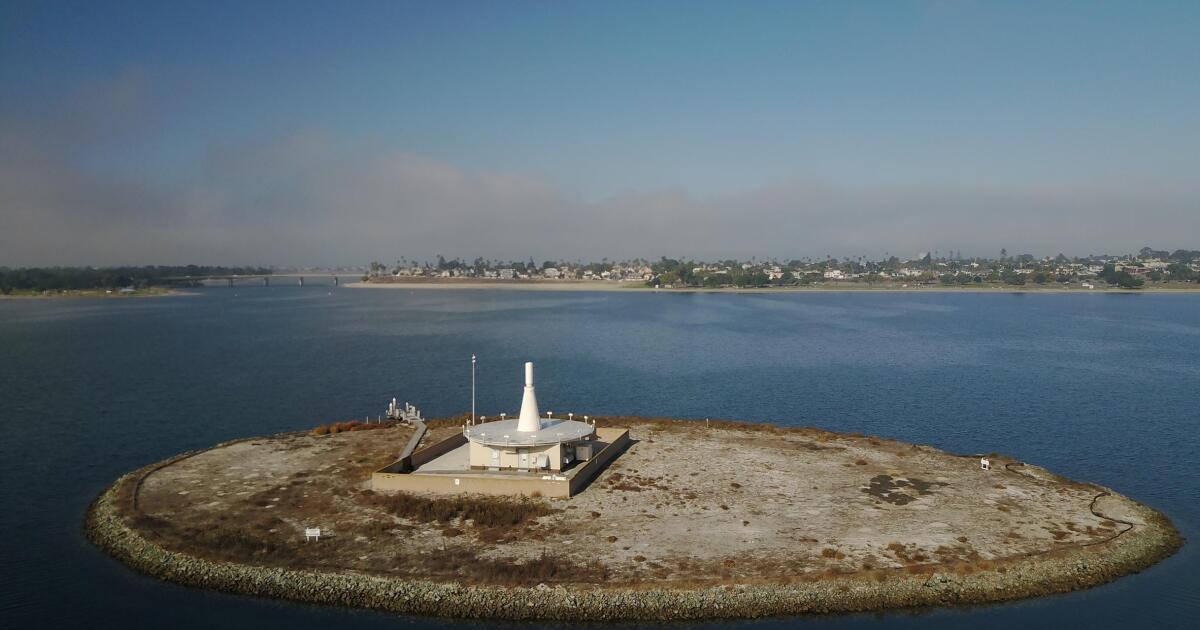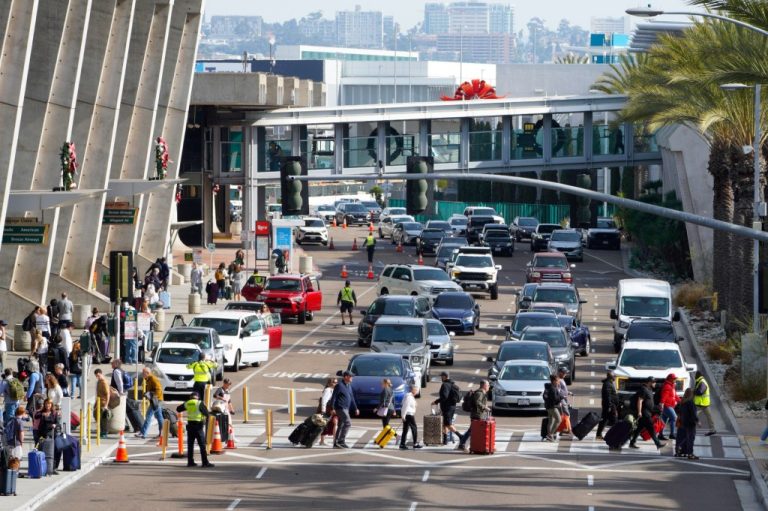

Mission Bay’s “bowling pin” island will continue to play a crucial role in local airplane navigation and bird nesting for the next two decades, thanks to a new city lease with the Federal Aviation Administration.
Since at least 1961, the conspicuous 2-acre island has helped guide commercial aircraft, private planes and military planes with a white structure shaped like a bowling pin. It’s located about three miles from San Diego International Airport.
In conjunction with the new lease, the FAA has replaced an aging dock that provides boat access to the island and recently restored riprap in four places where the island was eroding into the bay.
The human-made island is in Fiesta Bay, between Fiesta Island and Crown Point.
The new 20-year lease comes just in time for the start of nesting season for endangered least terns, which use the island as one of four key nesting sites in Mission Bay.
Least terns had at least 150 nests on the island last year, said Andrew Meyer, conservation director for the Audubon Society’s local chapter. The bay’s three other nesting sites are North Fiesta Island, Stony Point and Mariners Point.
The island’s environmental resources are co-managed by Audubon and the U.S. Fish and Wildlife Service. Their employees visit the island roughly 10 times a month.
Aviation officials say they visit about as frequently. The island’s bowling pin transmits tones that can help pilots maintain proper direction and detect when they have nosed off course.
It is one of eight such navigational aids — called VORTAC stations — in San Diego County. The others are at Camp Pendleton, Oceanside, Julian, Miramar, La Jolla’s Mount Soledad, Imperial Beach and Coronado’s North Island.
The dock and riprap upgrades also included installation of new bird spikes, a new bird structure and elimination of areas where raptors and other predators can hide.
“We have about half the number of nesting California least terns as we did 15 years ago,” Meyer said. “Predators, climate change impacts like warmer ocean temperatures and invasive species taking over their nesting sites have decimated the population.”
The lease, which runs through 2041, requires no rent from the FAA because the island serves a crucial safety purpose for airplane navigation.
An appraisal paid for by city officials determined the value of the site would be $2,500 a month or $30,000 a year. Those amounts are based on typical rents for VORTAC stations and other telecommunications facilities in the region.
The previous lease, which dated back to 2001, expired in 2021.
FAA officials said the dock hadn’t been replaced since it was first built in 1961. The new dock is the same width — 8 feet — but 4 feet longer at 27.5 feet. It’s also located more toward De Anza Cove.







